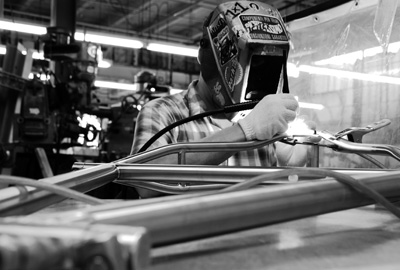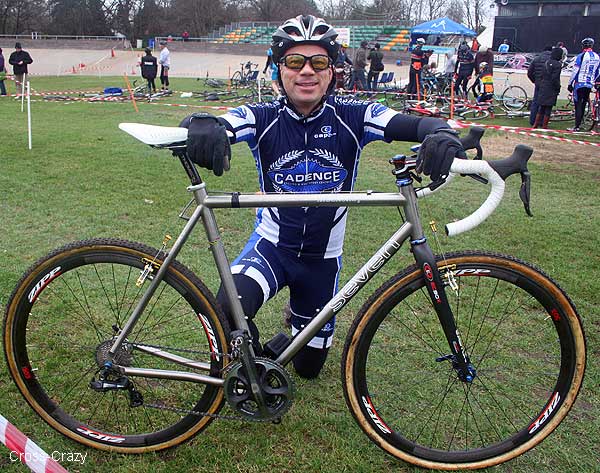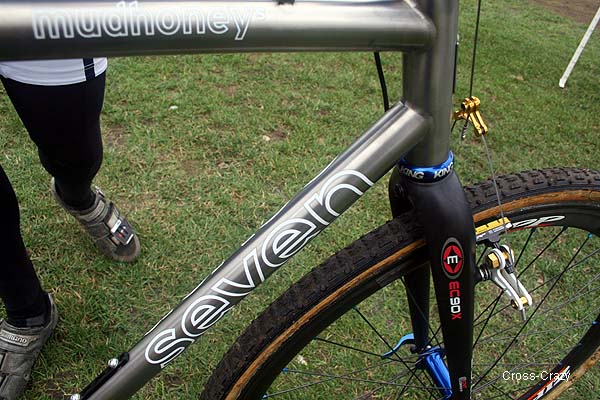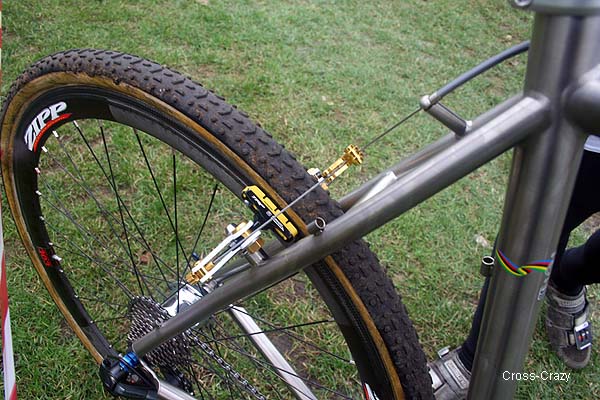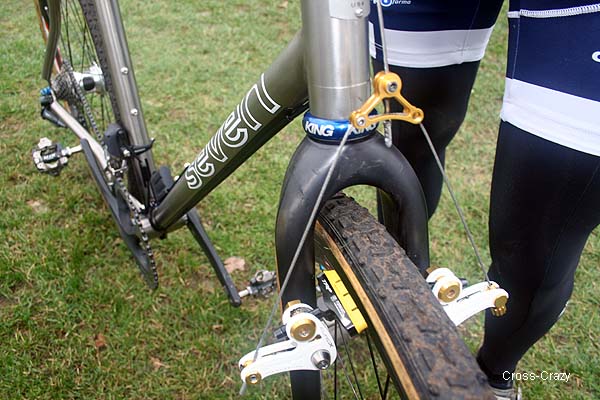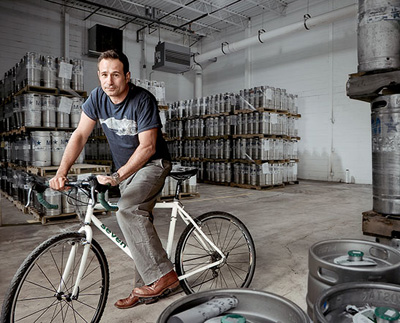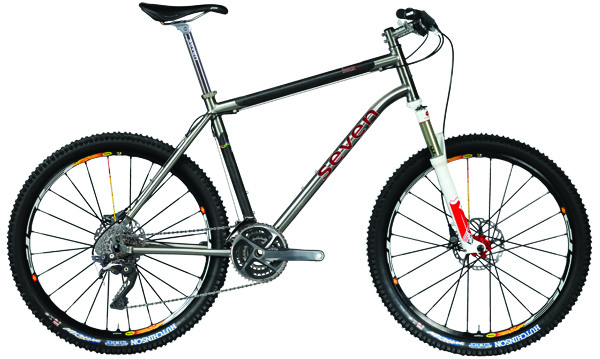By Peter Easton
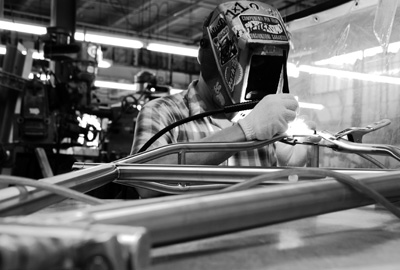
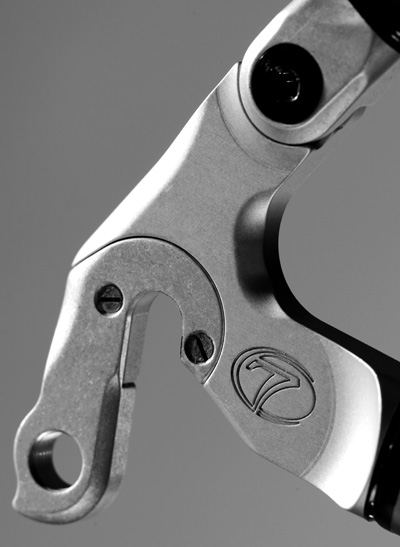
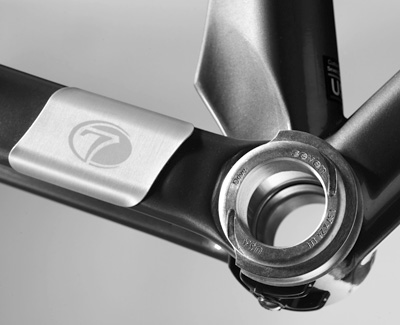
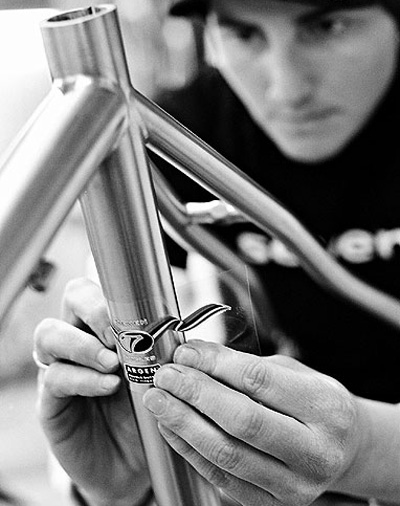
In the contemporary world of bicycle manufacturing, the majority of artistry that defines the mainstream production of a bicycle can be found primarily in glossy advertisements and flashy animated websites. In some instances, the actual product consists of very little art outside of a paint job. For some factories and warehouses, their stalls are filled with endless rows of frames hanging in repetition, barely distinguishable from each other. The art of framebuilding has seen many pioneers, those artists and sculptures who set out to carve their niche in a specialized segment of the industry, each with their own talent, materials and eventually, customer loyalty that helped fill orders and spread the word. But it’s no secret that a life as a framebuilder is a labor of love, and not the glamorous lifestyle some photos may portray. Tight margins, endless hours and demanding customers are just a few of the issues the struggling torchbearer has faced, and many have folded, with little success as a business.
Toward the end of the 1990s, a significant shift in frame building and materials was in full swing, and titanium had become the exotic metal everyone had to have, and few builders had expertise in. Light, resilient, compliant and with a high strength to fatigue ratio, titanium bike manufacturing sprung up across the country in an effort to capitalize on the demand, explore new possibilities, and advance the development of an emerging technology. While many looked closely at how to produce a large number of frames with cheaply sourced titanium, one builder felt the time was right to take a larger look at how to develop the infrastructure to build a large number of frames one at a time.
Rob Vandermark is not your typical CEO. His vision for creating a custom bike manufacturing company was born mainly out of a desire to streamline a production process that had succeeded in effectively removing the art and artistry and ultimately one of the most beautiful aspects of a bike: the hand built custom frame. Prior to founding Seven in 1997, Vandermark worked as head of Research and Development at Merlin Metalworks, a pioneer in titanium frame building. Vandermark’s ten years at Merlin enabled him to work in all aspects of bicycle frame building and design, from machining and welding to product development and process improvement. At the close of 1996, Vandermark decided the time was right to leave Merlin, mainly because the company began focusing on the mainstream market at the same time he was becoming more interested in pushing the limits of bike customization, technology transfer, and the Toyota Production System, a manufacturing philosophy based on the single piece flow theory, which is production only commences when an order has been placed. “ I really wanted to see how these three ideas could converge in a new and successful way and four of us started Seven in January 1997.” The rest, as they say, might be categorized as history, but behind the gloss of every titanium, steel and carbon bike there is a business philosophy that has been strictly adhered to, and a mindset that has fostered Seven’s success and proven Vandermark’s thinking to be groundbreaking, some would even call, revolutionary. The success of customization relies on optimization.
Many bike companies boast what their bikes do for the professionals, or what the pros do with their bikes, but fail to tell me how it benefits me. After all, who is it that is actually buying the bike? The trickle down theory doesn’t work here. Many of these bikes are built with a very short shelf life, with effort put into maximizing every last ounce and dropping every last gram of weight to put forth a frame that, on some occasions, is raced very few days out of the year. Misleading the consumer is a poor sales tactic, and one that is primarily based on undercutting competition and creating a distraction that keeps one from looking too deep at the product. Many companies claim to have the latest and greatest technology, but how did they arrive at a point where they need wildly stupid graphics, insulting and sometimes perverse language, and offensive imagery to sell? My feeling is if you are causing a distraction, it’s because you don’t have enough behind what you sell. (All I need is to see Tom Boonen in a gladiator suit, or Alberto Contador meditating and levitating in a toga to be reminded of this.)
While the major players get the majority of exposure based on market saturation—pro team sponsorship, full-page ads in magazines, cover shots for, and the majority of, bike reviews—it begs the question—where does the smaller guy fit in? Bikes designed and built for the pros are built to be raced aggressively, with no concept of warranty or longevity issues. Do you really want a bike that may fail after a year, simply because it makes a claim that it is the lightest, or it’s ridden by the top riders? I sure don’t. It is the little guy that is holding onto principles he believes in, not hiding behind misleading ads. These are the guys that are in the business end of the sport because they not only love eh sport, but they love what they do, and don’t feel the need to spend dollars on amateurish ads and marketing that is an insult to the sport and my intelligence. We read war language on the front page of our newspapers every day. Do we really need it to sell a bike? I hope not.
Entering the Seven factory, one would be forgiven if they missed the front door, or thought they were a bit lost. Occupying 15,000 feet of warehouse space in the industrial neighborhood of Watertown, MA, there is no grand lobby, no “wall of fame” with autographed jerseys, framed photos of bike celebrities or life size cutouts of the latest rider to promote their latest bike. The office area is stuffed with a hard working crew of dedicated self-thinkers, meshing effectively to work in a non-hierarchical system that encourages freethinking, production and process analysis and criticism with the goal of producing a product they are proud of. There is an unassuming sense that behind all this work is fueled with an uncompromising commitment to excellence framed by an obsession to detail. Perfecting the infrastructure of manufacturing and incorporating flexibility into the process enables one bike to be built at a time with 100% attention from its builder, and is the success behind the single piece flow manufacturing theory. The exacting standards that have been incorporated into a production model that is lean, efficient and customer-centric is the foundation for any measure of production success at Seven. One of the more interesting elements is that there is no set production schedule for frame building. The factory is set up to handle the cutting, bending, shaping and welding of materials for a variety of framesets, so as a bike is designed and ready to be built, it is simply put into the cue for production. But the word production sounds robotic, reeks of an assembly line mentality that removes the personality, the human element, the artistry. Not so at Seven. Standing on the factory floor, no less than eight employees manned their machines, each reviewing a manila folder with CAD drawings and specifications, a small box containing tubeset not far away. This box of tubes, and its folder is passed on after each stage of work is completed. Seven’s machinists strive for 100 percent accuracy in every part they work on and each frame undergoes a series of alignment checks throughout the welding process. Seven boasts having the tightest tolerances in the industry, and watching the craft first hand, it is apparent that this is a worthy claim.
The factory floor itself is a maze of machinery, mobile bike jigs, and individual welding stations. Mattison Crowe, Seven’s Director of Marketing, explained the production theories behind the success of Seven, and while this was not my first visit, it is always refreshing, educational, and inspiring to hear the specifics. Customization and optimization are the key words at Seven, and some might even call it their philosophy. While optimizing the tube sets for performance, and customizing the fit and build for each customer is the key to success for a custom bike manufacturer (Seven), without an optimized production methodology, much of the process, and the ability to offer such a range of customization, would be lost. Seven’s approach to customization is unusual, and consists of five elements: Fit and Comfort; Handling and Performance; Tubing and Materials; Features and Options; and the Future. The custom fit is just one small piece of the overall design, as the designers invest plenty of energy in customizing and optimizing the bike’s tubeset, ride characteristics, handling, performance aspects, and aesthetics. From a manufacturing standpoint, having each of Seven’s framebuilders focus on only one bike at a time, there exists better quality control, fewer defects caused by mass production, more efficiency, and more opportunity for innovation and product and process improvements. This is the underlying success in a more customer-centric philosophy.
For me, there is an art in this, there is a vision that embraces innovation, but relies on human excellence for its success, and the communal efforts of committed cyclists, artists, businesspeople and designers. There is an effort, and success, in breaking down the barriers of intimidation and miscommunication and eliminates the pretension that exists at so many levels within our sport. One of the most refreshing aspects of Seven is the commonality of love for the bike. Every bike. Every bike ride. Every bike rider. For some companies, their success is built largely on race frames. For others, it’s touring frames. Yet others may only make mountain bikes. Seven embraces it all, and holds every customer, every customer, every type of rider as equal and important as the next. Business philosophy, yes. Successful. Darn right. Embracing the lifestyle of the bicycle, not isolating those who don’t fit into a predetermined image or category. Many companies offer a tag line, and then fail to live up to it, change it to meet market demands, or simply cut corners all together. At Seven, it’s “One Bike. Yours”. And once you have one, trust me, you will want another.
Ride. Rest. Repeat.
Vandermark’s passion for cycling, and his business savvy, extends beyond Seven. Promoting a friendly environment within the cycling community, the Ride Studio Cafe, in Lexington, Massachusetts is a unique combination of high end bike shop and sophisticated coffee shop, creating a social environment that welcomes cyclists, coffee drinkers and passers by to engage with each other—something cyclists typically have a hard time doing. Lexington is well known as a Revolutionary War centerpiece, and as I drove Massachusetts Avenue, I immediately felt that New England charm, even though it was decorated with three-foot high snow banks. A quiet midweek afternoon did not damper the social enthusiasm of the Ride Studio’s Andrea Smith, the engaging, and so I learned later, very talented cyclocross rider who is also the shop’s mechanic. Andrea seems to exemplify perfectly the theme of Ride Studio Cafe, with a relaxed demeanor that can put the most cynical New Yorker at ease in a very short period of time. Her brilliant smile brightened an otherwise gray day.
Well caffeinated from lunch, and unwilling to risk a midnight caffeine rush, I passed on sampling the excellent brew that was available and being masterfully poured by David Simon, who to my surprise, greeted me by name, before informing me that Rob had just phoned from Seven to tell them I was on my way. Just another way of making the customer the centerpiece.
In an ideal world, the Ride Studio Cafe will continue on its rising trajectory and become a highly successful store that will spawn siblings and eventually find it’s way into the New York Metropolitan area. Until then, Seven, and RSC seem content to keep working at changing the world one bike at a time.

